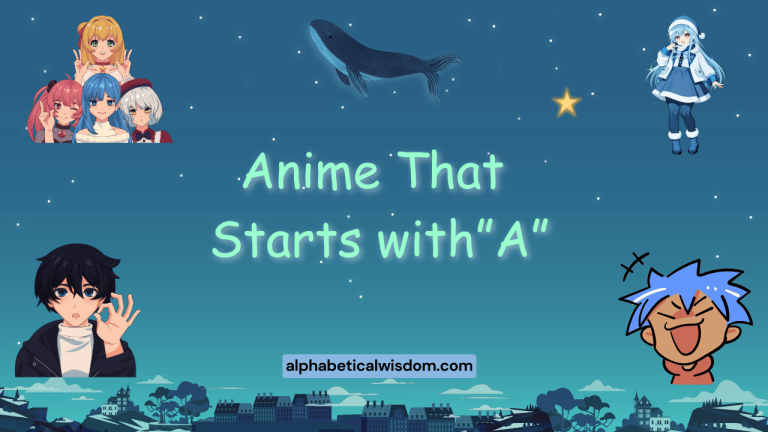Relative Clauses: Mastering Complex Sentence Structure
Understanding relative clauses is crucial for constructing complex and nuanced sentences in English. These clauses add detail and specificity to nouns, enriching your writing and speaking.
This article provides a comprehensive guide to relative clauses, covering their definition, structure, types, usage rules, and common mistakes. Whether you’re a beginner or an advanced learner, this guide will help you master the art of using relative clauses effectively and confidently.
Introduction
Relative clauses are essential tools in the English language for adding depth and detail to sentences. They allow us to provide additional information about a noun without starting a new sentence, making our writing more concise and sophisticated.
Mastering relative clauses can significantly improve your ability to express complex ideas and enhance your overall communication skills. This guide is designed to equip you with the knowledge and practice needed to confidently use relative clauses in various contexts.
This article will break down the complexities of relative clauses into manageable sections, providing clear explanations, numerous examples, and practical exercises. Whether you are preparing for an English exam, writing an academic paper, or simply aiming to improve your everyday communication, understanding relative clauses is a valuable asset.
By the end of this guide, you will be able to identify, construct, and effectively use relative clauses in your writing and speaking.
Definition of Relative Clauses
A relative clause is a type of subordinate clause that modifies a noun or noun phrase. It provides additional information about the noun it modifies, helping to identify or describe it further. Relative clauses are introduced by relative pronouns (who, whom, which, that) or relative adverbs (where, when, why).
The primary function of a relative clause is to act as an adjective, providing more detail about the noun it modifies. This allows writers and speakers to combine information and create more complex and informative sentences.
Without relative clauses, we would need to use multiple simple sentences to convey the same information, resulting in a less fluid and engaging style.
Relative clauses can be classified into two main types: defining (or restrictive) and non-defining (or non-restrictive). Defining relative clauses are essential to the meaning of the sentence because they identify the noun being modified. Non-defining relative clauses provide additional, non-essential information and are set off by commas.
Structural Breakdown
The structure of a relative clause typically involves a relative pronoun or adverb followed by a subject and a verb. However, the subject can sometimes be omitted, particularly in contact relative clauses.
Understanding the basic components of a relative clause is essential for constructing them correctly.
The basic structure is:
Noun + Relative Pronoun/Adverb + Subject + Verb (+ Object/Complement)
Here’s a breakdown of each component:
- Noun: The noun or noun phrase that the relative clause modifies (also known as the antecedent).
- Relative Pronoun/Adverb: Introduces the relative clause and connects it to the noun. Common relative pronouns include who (for people), which (for things), and that (for people or things). Relative adverbs include where (for places), when (for times), and why (for reasons).
- Subject: The subject of the relative clause, which can be a noun or pronoun.
- Verb: The verb of the relative clause.
- Object/Complement: Optional elements that complete the meaning of the verb.
Let’s look at some examples to illustrate this structure:
- The book that I borrowed is very interesting. (Noun: book; Relative Pronoun: that; Subject: I; Verb: borrowed)
- The woman who lives next door is a doctor. (Noun: woman; Relative Pronoun: who; Subject: who; Verb: lives)
- The restaurant where we ate last night was excellent. (Noun: restaurant; Relative Adverb: where; Subject: we; Verb: ate)
In some cases, the relative pronoun can be omitted, creating what is known as a contact relative clause. This is common when the relative pronoun is the object of the verb in the relative clause.
For example:
- The book I borrowed is very interesting. (The relative pronoun “that” is omitted.)
Types of Relative Clauses
Relative clauses can be categorized into three main types: defining relative clauses, non-defining relative clauses, and contact relative clauses. Each type serves a different purpose and follows slightly different rules.
Defining Relative Clauses
Defining relative clauses (also known as restrictive relative clauses) provide essential information that identifies the noun they modify. They are necessary for understanding which specific noun is being referred to. Without a defining relative clause, the meaning of the sentence would be unclear or incomplete. These clauses are not set off by commas.
Here are some examples of defining relative clauses:
- The car that I bought last week is already having problems. (Identifies which car is being referred to.)
- The student who studies the hardest usually gets the best grades. (Identifies which student is being referred to.)
- The house where I grew up is now a museum. (Identifies which house is being referred to.)
In defining relative clauses, the relative pronoun that can often be used instead of who or which. However, who is generally preferred when referring to people.
Non-Defining Relative Clauses
Non-defining relative clauses (also known as non-restrictive relative clauses) provide additional, non-essential information about the noun they modify. This information is interesting but not necessary for identifying the noun. Non-defining relative clauses are always set off by commas.
Here are some examples of non-defining relative clauses:
- My sister, who lives in London, is a doctor. (Provides additional information about the sister, but it’s clear which sister is being referred to.)
- Paris, which is the capital of France, is a beautiful city. (Provides additional information about Paris, but it’s clear which city is being referred to.)
- My car, which I bought last year, is very reliable. (Provides additional information about the car, but it’s clear which car is being referred to.)
In non-defining relative clauses, the relative pronoun that cannot be used. Only who and which are allowed. Additionally, the relative pronoun cannot be omitted.
Contact Relative Clauses
Contact relative clauses are relative clauses where the relative pronoun is omitted. This is possible when the relative pronoun is the object of the verb in the relative clause. Contact relative clauses are typically used in defining relative clauses.
Here are some examples of contact relative clauses:
- The book I borrowed is very interesting. (The relative pronoun “that” is omitted.)
- The man she loves is a talented musician. (The relative pronoun “who” or “that” is omitted.)
- The song they played at the party was my favorite. (The relative pronoun “that” is omitted.)
Contact relative clauses are more common in informal writing and speech. In formal contexts, it is often preferable to include the relative pronoun for clarity.
Examples of Relative Clauses
To further illustrate the use of relative clauses, let’s examine a variety of examples organized by the type of relative pronoun or adverb used.
The following tables provide a comprehensive list of examples, categorized by relative pronoun (who, whom, which, that) and relative adverb (where, when, why).
Examples with “Who”
The following table provides examples of relative clauses using the relative pronoun “who,” which is used to refer to people.
| # | Example Sentence | Type of Clause |
|---|---|---|
| 1 | The woman who teaches my English class is very knowledgeable. | Defining |
| 2 | My neighbor, who is a retired doctor, volunteers at the local hospital. | Non-Defining |
| 3 | The student who won the scholarship is very talented. | Defining |
| 4 | My best friend, who I’ve known since childhood, is getting married next year. | Non-Defining |
| 5 | The artist who painted this portrait is world-renowned. | Defining |
| 6 | Shakespeare, who is considered one of the greatest writers in English, wrote many famous plays. | Non-Defining |
| 7 | The chef who created this dish is a culinary genius. | Defining |
| 8 | My grandfather, who fought in World War II, is a true hero. | Non-Defining |
| 9 | The scientist who discovered this new element will receive a Nobel Prize. | Defining |
| 10 | Marie Curie, who pioneered research on radioactivity, was a brilliant scientist. | Non-Defining |
| 11 | The actor who played the lead role gave a stunning performance. | Defining |
| 12 | Angelina Jolie, who is known for her humanitarian work, is a role model for many. | Non-Defining |
| 13 | The author who wrote this book is giving a reading tonight. | Defining |
| 14 | J.K. Rowling, who wrote the Harry Potter series, is a very successful author. | Non-Defining |
| 15 | The musician who composed this song is a rising star. | Defining |
| 16 | Beethoven, who was a famous composer, wrote many symphonies. | Non-Defining |
| 17 | The athlete who broke the world record is an inspiration to us all. | Defining |
| 18 | Michael Jordan, who is considered one of the greatest basketball players of all time, is a legend. | Non-Defining |
| 19 | The teacher who inspired me the most is retiring this year. | Defining |
| 20 | My mentor, who guided me through my career, is a wise and supportive person. | Non-Defining |
| 21 | The person who called earlier didn’t leave a message. | Defining |
| 22 | My aunt, who is a talented gardener, has a beautiful backyard. | Non-Defining |
| 23 | The candidate who wins the election will face many challenges. | Defining |
| 24 | The Queen, who celebrated her Platinum Jubilee, is a symbol of stability. | Non-Defining |
| 25 | The doctor who treated my illness is highly skilled. | Defining |
| 26 | Dr. Smith, who specializes in cardiology, is a leading expert in her field. | Non-Defining |
| 27 | The lawyer who represented the client won the case. | Defining |
| 28 | My cousin, who is studying abroad, is having an amazing experience. | Non-Defining |
| 29 | The engineer who designed this bridge is a visionary. | Defining |
| 30 | Elon Musk, who founded Tesla and SpaceX, is a controversial figure. | Non-Defining |
Examples with “Which”
The following table provides examples of relative clauses using the relative pronoun “which,” which is used to refer to things and animals.
| # | Example Sentence | Type of Clause |
|---|---|---|
| 1 | The car which I bought last month is already having problems. | Defining |
| 2 | My house, which is over 100 years old, needs some repairs. | Non-Defining |
| 3 | The book which I’m reading is a fascinating mystery. | Defining |
| 4 | The Eiffel Tower, which is a famous landmark, attracts millions of tourists every year. | Non-Defining |
| 5 | The computer which I use for work is very efficient. | Defining |
| 6 | My phone, which I just upgraded, has a much better camera. | Non-Defining |
| 7 | The movie which we watched last night was really scary. | Defining |
| 8 | The Amazon River, which is the second-longest river in the world, is home to many unique species. | Non-Defining |
| 9 | The painting which hangs in the museum is a masterpiece. | Defining |
| 10 | The Louvre, which houses the Mona Lisa, is one of the most famous museums in the world. | Non-Defining |
| 11 | The song which they played at the party was my favorite. | Defining |
| 12 | My garden, which I tend to every day, is full of beautiful flowers. | Non-Defining |
| 13 | The project which I’m working on is very challenging. | Defining |
| 14 | The Great Wall of China, which is a UNESCO World Heritage Site, is an impressive structure. | Non-Defining |
| 15 | The app which I downloaded is very useful. | Defining |
| 16 | My new laptop, which I received for my birthday, is incredibly fast. | Non-Defining |
| 17 | The game which I’m playing is very addictive. | Defining |
| 18 | The Colosseum, which is located in Rome, is a popular tourist attraction. | Non-Defining |
| 19 | The recipe which I found online is delicious. | Defining |
| 20 | My favorite restaurant, which is located downtown, serves amazing food. | Non-Defining |
| 21 | The test which I took yesterday was very difficult. | Defining |
| 22 | The report, which was submitted late, was not accepted. | Non-Defining |
| 23 | The email which I received this morning was very important. | Defining |
| 24 | The package, which arrived damaged, was returned. | Non-Defining |
| 25 | The idea which I proposed was well-received. | Defining |
| 26 | The plan, which was carefully thought out, failed. | Non-Defining |
| 27 | The solution which I found was very effective. | Defining |
| 28 | The problem, which seemed unsolvable, was eventually resolved. | Non-Defining |
| 29 | The method which I used was very efficient. | Defining |
| 30 | The result, which was unexpected, was welcomed. | Non-Defining |
Examples with “That”
The following table provides examples of relative clauses using the relative pronoun “that,” which can be used to refer to both people and things in defining relative clauses.
| # | Example Sentence | Type of Clause |
|---|---|---|
| 1 | The book that I borrowed is very interesting. | Defining |
| 2 | The man that I saw yesterday was very tall. | Defining |
| 3 | The car that I want to buy is very expensive. | Defining |
| 4 | The woman that teaches my class is very knowledgeable. | Defining |
| 5 | The movie that we watched last night was excellent. | Defining |
| 6 | The song that they played at the concert was my favorite. | Defining |
| 7 | The house that I grew up in is now a restaurant. | Defining |
| 8 | The computer that I use for work is very efficient. | Defining |
| 9 | The phone that I bought last week is already broken. | Defining |
| 10 | The project that I’m working on is very challenging. | Defining |
| 11 | The idea that I proposed was well-received. | Defining |
| 12 | The solution that I found was very effective. | Defining |
| 13 | The method that I used was very efficient. | Defining |
| 14 | The result that I achieved was unexpected. | Defining |
| 15 | The test that I took yesterday was very difficult. | Defining |
| 16 | The report that I submitted was approved. | Defining |
| 17 | The email that I received was very important. | Defining |
| 18 | The package that I sent arrived on time. | Defining |
| 19 | The plan that I created was successful. | Defining |
| 20 | The system that I designed is very efficient. | Defining |
| 21 | The lesson that I learned was very valuable. | Defining |
| 22 | The experience that I had was unforgettable. | Defining |
| 23 | The opportunity that I seized was life-changing. | Defining |
| 24 | The challenge that I faced was very difficult. | Defining |
| 25 | The goal that I achieved was very rewarding. | Defining |
| 26 | The dream that I pursued came true. | Defining |
| 27 | The skill that I developed is very useful. | Defining |
| 28 | The knowledge that I gained is very valuable. | Defining |
| 29 | The connection that I made was very meaningful. | Defining |
| 30 | The impact that I had was very positive. | Defining |
Examples with “Where”, “When”, and “Why”
This table provides examples of relative clauses using the relative adverbs “where” (for places), “when” (for times), and “why” (for reasons).
| # | Example Sentence | Type of Clause |
|---|---|---|
| 1 | The restaurant where we ate last night was excellent. | Defining |
| 2 | The day when I met her was the best day of my life. | Defining |
| 3 | I don’t know the reason why she left. | Defining |
| 4 | Paris, where I spent my honeymoon, is a beautiful city. | Non-Defining |
| 5 | July, when the weather is warmest, is a popular time for vacations. | Non-Defining |
| 6 | The library where I study is very quiet. | Defining |
| 7 | The year when the Berlin Wall fell was a turning point in history. | Defining |
| 8 | The reason why he was late was because of the traffic. | Defining |
| 9 | London, where I used to live, is a vibrant city. | Non-Defining |
| 10 | Christmas, when families gather together, is a special time of year. | Non-Defining |
| 11 | The park where I walk my dog is very peaceful. | Defining |
| 12 | The moment when I realized my dream was unforgettable. | Defining |
| 13 | The reason why I’m learning English is to improve my career prospects. | Defining |
| 14 | Rome, where the Colosseum is located, is a historic city. | Non-Defining |
| 15 | Spring, when the flowers bloom, is my favorite season. | Non-Defining |
| 16 | The school where I went to college is highly regarded. | Defining |
| 17 | The era when jazz music flourished was a golden age. | Defining |
| 18 | The reason why I chose this career is because I’m passionate about it. | Defining |
| 19 | New York, where Broadway shows are performed, is a cultural hub. | Non-Defining |
| 20 | My birthday, when I receive presents, is a day I always look forward to. | Non-Defining |
| 21 | The office where I work is very modern. | Defining |
| 22 | The time when I feel most relaxed is when I’m reading a book. | Defining |
| 23 | The reason why I exercise is to stay healthy. | Defining |
| 24 | Tokyo, where the Olympic Games were held, is a bustling metropolis. | Non-Defining |
| 25 | Summer, when the days are long, is a great time for outdoor activities. | Non-Defining |
| 26 | The stadium where the concert will be held is huge. | Defining |
| 27 | The period when I lived abroad was very enriching. | Defining |
| 28 | The reason why I travel is to experience new cultures. | Defining |
| 29 | Sydney, where the Opera House is located, is a beautiful city. | Non-Defining |
| 30 | Night, when the stars come out, is a peaceful time. | Non-Defining |
Usage Rules
Using relative clauses correctly involves following specific rules regarding the choice of relative pronouns and adverbs, the placement of commas, and the omission of relative pronouns. Adhering to these rules ensures clarity and grammatical accuracy.
Here are some key usage rules to keep in mind:
- Use who to refer to people. Example: The woman who teaches my class is very knowledgeable.
- Use which to refer to things and animals. Example: The car, which I bought last month, is already having problems.
- Use that to refer to people or things in defining relative clauses. Example: The book that I borrowed is very interesting.
- Use where to refer to places. Example: The restaurant where we ate last night was excellent.
- Use when to refer to times. Example: The day when I met her was the best day of my life.
- Use why to refer to reasons. Example: I don’t know the reason why she left.
- Set off non-defining relative clauses with commas. Example: My sister, who lives in London, is a doctor.
- Do not set off defining relative clauses with commas. Example: The car that I bought last week is already having problems.
- In non-defining relative clauses, do not use that. Use who or which instead.
- You can omit the relative pronoun in contact relative clauses when it is the object of the verb. Example: The book I borrowed is very interesting. (Omission of “that”)
It is also important to consider the level of formality when using relative clauses. Contact relative clauses are more common in informal contexts, while including the relative pronoun is generally preferred in formal writing.
Common Mistakes
Learners often make common mistakes when using relative clauses. Understanding these errors and how to correct them is crucial for improving accuracy.
Here are some common mistakes and their corrections:
| Incorrect | Correct | Explanation |
|---|---|---|
| The woman that lives next door, is a doctor. | The woman who lives next door is a doctor. | Defining relative clauses should not be set off by commas. “That” can be used but “who” is preferred for people. |
| My sister who lives in London is a doctor. | My sister, who lives in London, is a doctor. | Non-defining relative clauses must be set off by commas. |
| The book which I borrowed is interesting. | The book that I borrowed is interesting. | In defining relative clauses, “that” is often preferred over “which,” especially in spoken English. “Which” is not incorrect, but “that” sounds more natural. |
| The car, that I bought, is new. | The car, which I bought, is new. | In non-defining relative clauses, you cannot use “that.” Use “which” instead. |
| The reason why I am late, is because of traffic. | The reason I am late is because of traffic. / I am late because of traffic. | “Why” already implies a reason, so “the reason why” is redundant. It can often be simplified. |
| The place where I live, is very quiet. | The place where I live is very quiet. | Defining relative clauses should not be set off by commas. |
| The time when I met her, was special. | The time when I met her was special. | Defining relative clauses should not be set off by commas. |
| The woman, who I met yesterday. | The woman whom I met yesterday. | When the relative pronoun is the object of the verb, “whom” is more formal and grammatically correct, though “who” is commonly used in informal contexts. |
Another common mistake is using the wrong relative pronoun. Always remember to use who for people, which for things and animals, and that for both people and things in defining relative clauses.
Practice Exercises
To reinforce your understanding of relative clauses, complete the following exercises. Identify the type of relative clause and fill in the blanks with the appropriate relative pronoun or adverb.
Exercise 1: Identifying Relative Clauses
Identify whether the relative clause in each sentence is defining or non-defining.
| # | Sentence | Type of Clause |
|---|---|---|
| 1 | The book that I ordered arrived today. | |
| 2 | My car, which is very old, still runs well. | |
| 3 | The student who studies hard will succeed. | |
| 4 | My teacher, who is very kind, helped me a lot. | |
| 5 | The house where I grew up is still standing. | |
| 6 | London, which is the capital of England, is a large city. | |
| 7 | The man who fixed my car is a mechanic. | |
| 8 | My dog, which is a golden retriever, loves to play fetch. | |
| 9 | The reason why I am late is because of the traffic. | |
| 10 | The day when I graduated was very special. |
Answer Key:
| # | Sentence | Type of Clause |
|---|---|---|
| 1 | The book that I ordered arrived today. | Defining |
| 2 | My car, which is very old, still runs well. | Non-Defining |
| 3 | The student who studies hard will succeed. | Defining |
| 4 | My teacher, who is very kind, helped me a lot. | Non-Defining |
| 5 | The house where I grew up is still standing. | Defining |
| 6 | London, which is the capital of England, is a large city. | Non-Defining |
| 7 | The man who fixed my car is a mechanic. | Defining |
| 8 | My dog, which is a golden retriever, loves to play fetch. | Non-Defining |
| 9 | The reason why I am late is because of the traffic. | Defining |
| 10 | The day when I graduated was very special. | Defining |
Exercise 2: Fill in the Blanks
Fill in the blanks with the appropriate relative pronoun (who, which, that, whom) or adverb (where, when, why).
| # | Sentence | Answer |
|---|---|---|
| 1 | The woman ______ teaches my class is very helpful. | |
| 2 | The car, ______ I bought last year, is very reliable. | |
| 3 | The book ______ I’m reading is very interesting. | |
| 4 | The restaurant ______ we ate last night was excellent. | |
| 5 | The day ______ I met my best friend was unforgettable. | |
| 6 | The reason ______ I’m learning English is to improve my career. | |
| 7 | The man ______ I saw at the store was very kind. | |
| 8 | The city, ______ I grew up, is very peaceful. | |
| 9 | The movie ______ we watched was very scary. | |
| 10 | The person to ______ I spoke was very helpful. |
Answer Key:
| # | Sentence | Answer |
|---|---|---|
| 1 | The woman who teaches my class is very helpful. | who |
| 2 | The car, which I bought last year, is very reliable. | which |
| 3 | The book that I’m reading is very interesting. | that |
| 4 | The restaurant where we ate last night was excellent. | where |
| 5 | The day when I met my best friend was unforgettable. | when |
| 6 | The reason why I’m learning English is to improve my career. | why |
| 7 | The man that I saw at the store was very kind. | that |
| 8 | The city, where I grew up, is very peaceful. | where |
| 9 | The movie that we watched was very scary. | that |
| 10 | The person to whom I spoke was very helpful. | whom |
Advanced Topics
For advanced learners, there are more complex aspects of relative clauses to explore, such as reduced relative clauses and the use of prepositions in relative clauses.
Reduced Relative Clauses: Reduced relative clauses are shortened forms of relative clauses where the relative pronoun and auxiliary verb are omitted. This is possible when the relative pronoun
and auxiliary verb are followed by a past participle or present participle.
Example:
- Original: The book that was written by a famous author is a bestseller.
- Reduced: The book written by a famous author is a bestseller.
Prepositions in Relative Clauses: Prepositions can appear at the end of relative clauses, particularly in informal English. In formal English, it is often preferable to place the preposition before the relative pronoun (especially whom and which).
Example:
- Informal: The house that I live in is very old.
- Formal: The house in which I live is very old.
Understanding these advanced topics can further enhance your ability to use relative clauses with precision and sophistication.
FAQ
Q: What is the difference between “who” and “whom”?
A: “Who” is used as the subject of a verb, while “whom” is used as the object of a verb or preposition. In modern English, “who” is often used in place of “whom,” especially in informal contexts.
Q: Can I use “that” in non-defining relative clauses?
A: No, “that” cannot be used in non-defining relative clauses. Use “who” or “which” instead.
Q: When can I omit the relative pronoun?
A: You can omit the relative pronoun in contact relative clauses when it is the object of the verb in the relative clause.
Q: Are commas always necessary in relative clauses?
A: Commas are necessary in non-defining relative clauses but not in defining relative clauses.
Q: What is a reduced relative clause?
A: A reduced relative clause is a shortened form of a relative clause where the relative pronoun and auxiliary verb are omitted.
Conclusion
Mastering relative clauses is essential for constructing complex and nuanced sentences in English. By understanding their definition, structure, types, usage rules, and common mistakes, you can significantly improve your writing and speaking skills.
This guide has provided a comprehensive overview of relative clauses, equipping you with the knowledge and practice needed to use them effectively and confidently.
Continue to practice and explore the advanced topics discussed to further enhance your understanding and proficiency. With consistent effort, you will be able to seamlessly incorporate relative clauses into your communication, adding depth and clarity to your expression.






